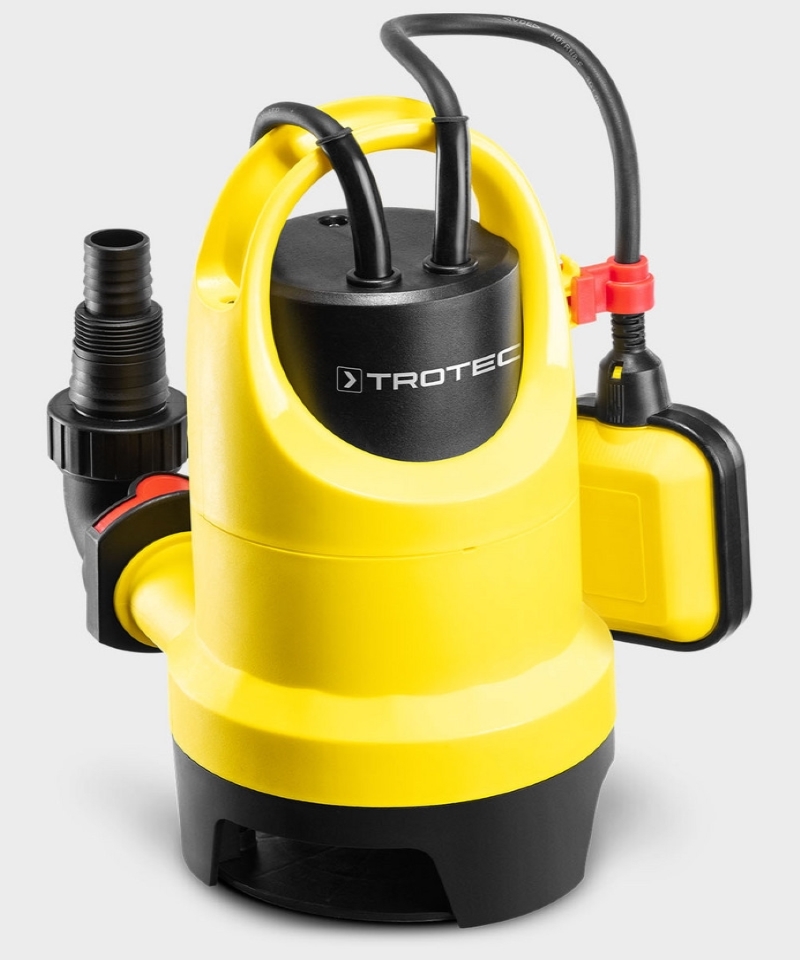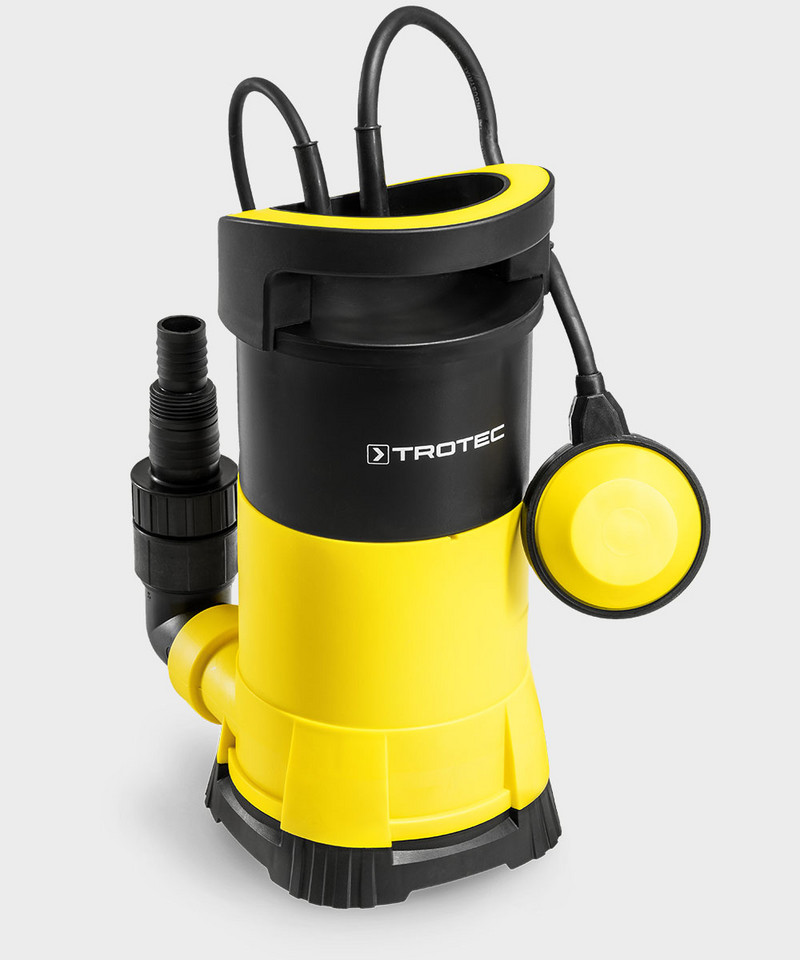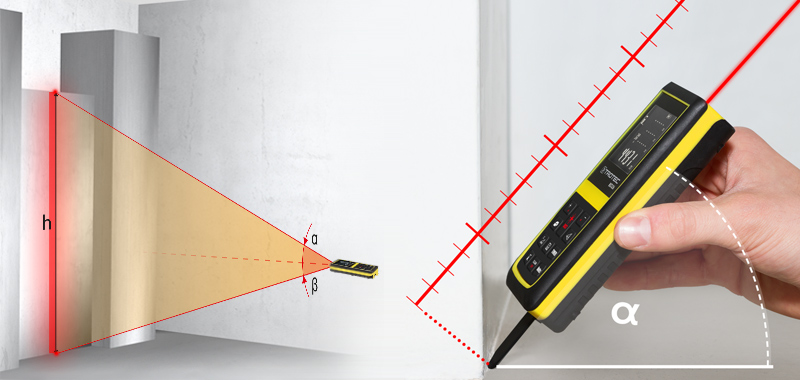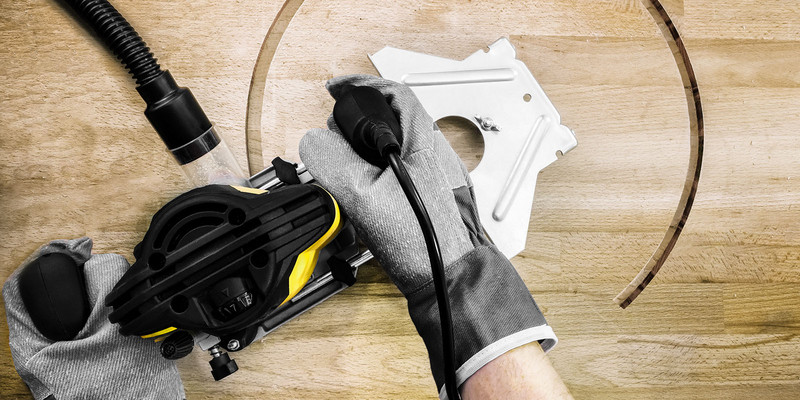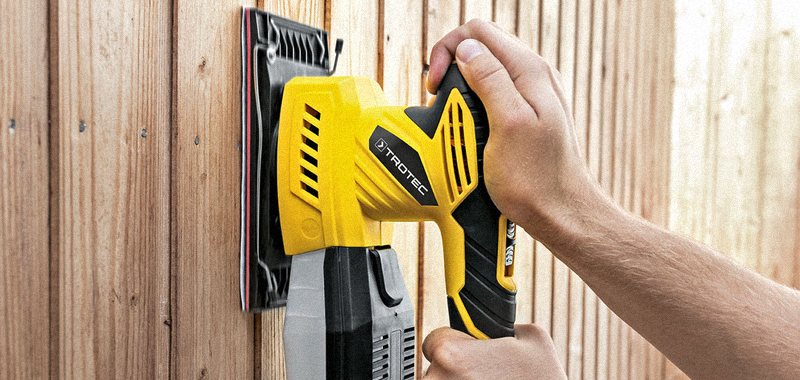You would like to learn more about submerged pumps and need a quick overview? This page provides answers to the most important questions: What is a submerged pump? How do submerged pumps work? What purchase criteria should be taken into account before deciding for a model?
Submerged pumps
აღწერა
Criteria for purchasing your submerged pump
Depending on where and how you want to use your submerged pump, you should prioritize different purchase criteria. The following criteria provide a good initial overview. Further information on the submerged pumps offered by Trotec can be found in the respective detailed descriptions.
- Submersion depth: The submersion depth is the maximum permissible distance between the upper edge of the device and the water surface. It can be an important purchase criterion if the pump is intended to operate completely immersed in water. High-quality low-voltage pumps usually work to a submersion depth of seven metres.
- Pump height: The pump height describes the difference in height between the place of draining and the target location higher up to which the liquid is transferred. A powerful clear water pump like Trotec’s TWP 9005 E, for instance, offers a pump height of 11.5 metres, and a waste water pump such as Trotec’s TWP 11025 E a pump height of 11 metres. If the target location is situated lower than the place where pumping takes place, the pump height is irrelevant since no pump performance is required in downslope direction.
- Feed rate: The feed rate of submerged pumps is indicated in litres per hour. Entry-level models for private use often have a feed rate of only less than 1,000 litres. More powerful pumps are able to feed between 1,000 and 15,000 litres. With feed rates of more than 10,000 litres per hour, some submerged pumps can also be used when very high requirements have to be met, for example in case of flooding.
- Particle size / grain size / solids size: The particle size (grain size or solids size) of submerged pumps indicates the maximum diameter of solids in the liquid to be pumped. Despite their name, clear water pumps can cope with particles sized up to 5 mm. Waste water pumps can be used for a considerably higher particle size of 25 mm.
- Residual water level: The residual water level indicates how much water will be left on the ground or in the receptacle after pumping operation is completed. Submerged pumps with near-ground suction reach a residual water level of only a few millimetres. The remaining liquid can simply be wiped up. Near-ground suction is an important purchase criterion particularly when it comes to water damages inside buildings. High-quality models without this near-ground suction feature, such as Trotec’s TWP 4025 E, leave a residual water level of around 35 mm. For applications like pumping water out of a well, however, such a residual water level is unproblematic.
- Plastic or stainless steel: Submerged pumps with a pump housing made of stainless steel are more robust against the effects of weather, impacts and shocks. The resistant material also extends the service life of the pump. Stainless steel submerged pumps are therefore preferably used in wells or rainwater cisterns to pump water permanently. Plastic submerged pumps are mobile all-rounders with a comparatively low weight. They are easy and convenient to transport. In normal everyday use, a submerged pump with a high-quality plastic housing is sufficiently protected against impacts and external influences.
- Float switch: The float switch ensures that the submerged pump switches on or off when a certain water level is reached. Submerged pumps with a lockable float switch are particularly practical as they allow for individual setting of the desired filling or water level. They can be used either in manual operation with automatic switch-on and switch-off or in continuous operation with fixed float switch.
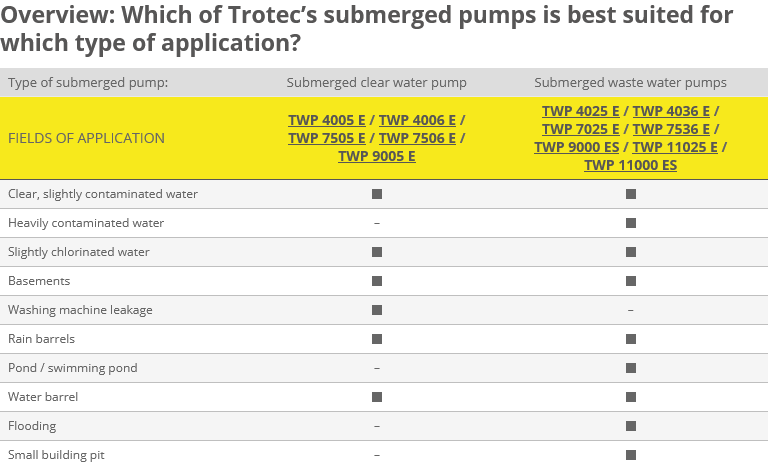
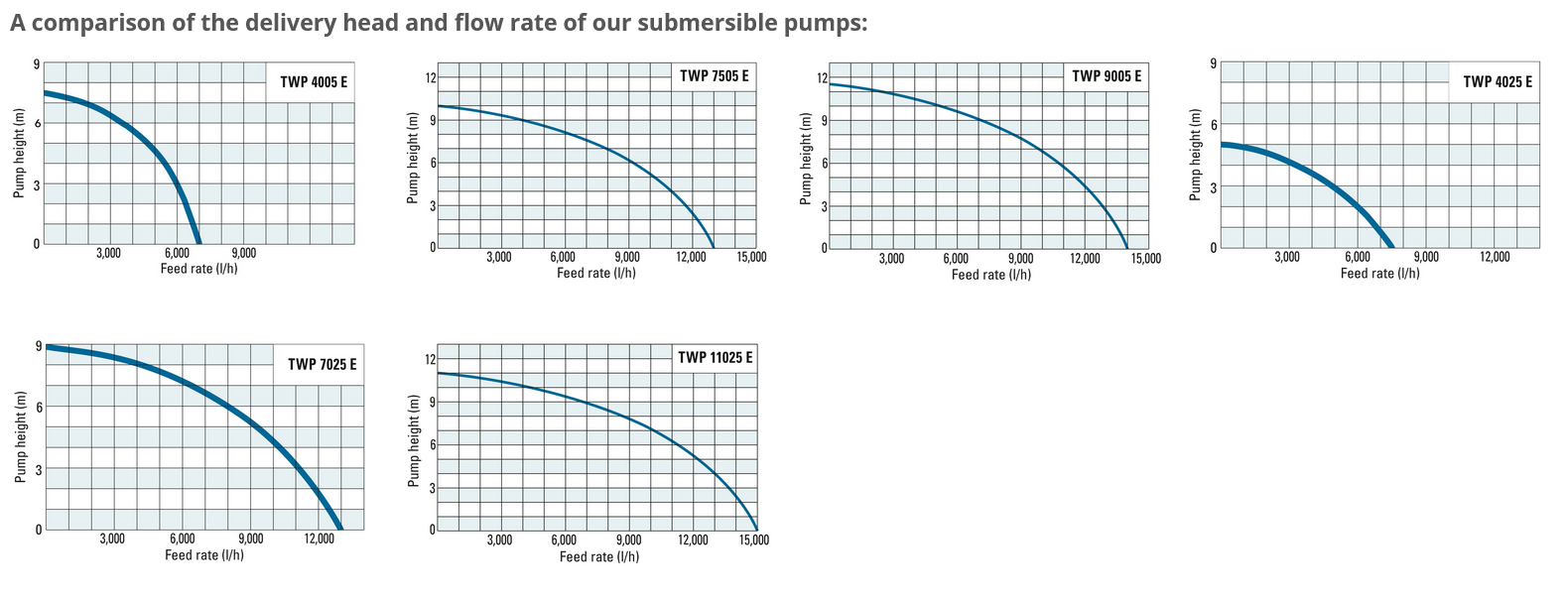
The difference between submerged clear water and submerged waste water pumps:

Submerged clear water pumps:
Submerged clear water pumps are used to effectively pump off and recirculate clear liquids or liquids that are only slightly contaminated with dirt particles, for instance to convey domestic sewage, rain or seepage water, in case of a washing machine leakage or for draining a pool. The maximum particle size indicates how large the dirt particles may be without causing damage to the pump.
A particular advantage offered by submerged clear water pumps is the possibility of “near-ground suction”. Due to this technical feature, the water can be pumped off to a particularly low water level of only a few millimetres – resulting in what is called “wipe-dry drainage”. The minimum suction level to which water can be pumped off is specified in the pumps’ technical data.
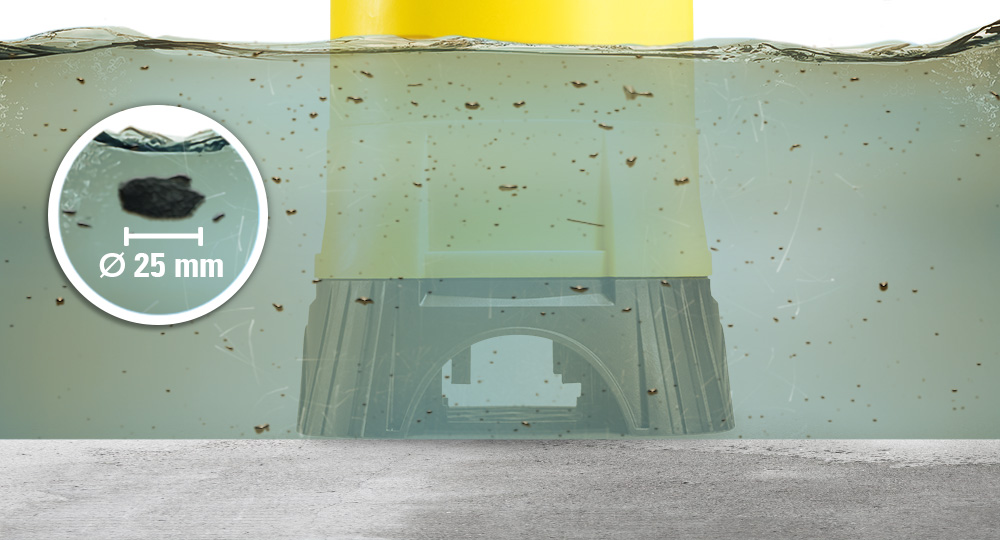
Submerged waste water pumps:
Submerged waste water pumps convey heavily contaminated water, which is for example required when emptying garden ponds, tanks or cisterns, pumping water out of building and waste water pits, withdrawing water from lakes, ponds and rivers, or in cases of emergency draining due to flooding. Here, too, the maximum particle size indicates the maximum diameter of the contaminations contained in the pumped liquid. Naturally, submerged waste water pump are also suited for transporting clear water.
In addition to the already mentioned typical purposes of use, the versatile range of applications of submerged waste water pumps also includes drainage under difficult and extreme conditions. Due to their high-quality technology, the pumps are an indispensable aid for emptying building and waste water pits as well as for emergency draining in case of flooding.







